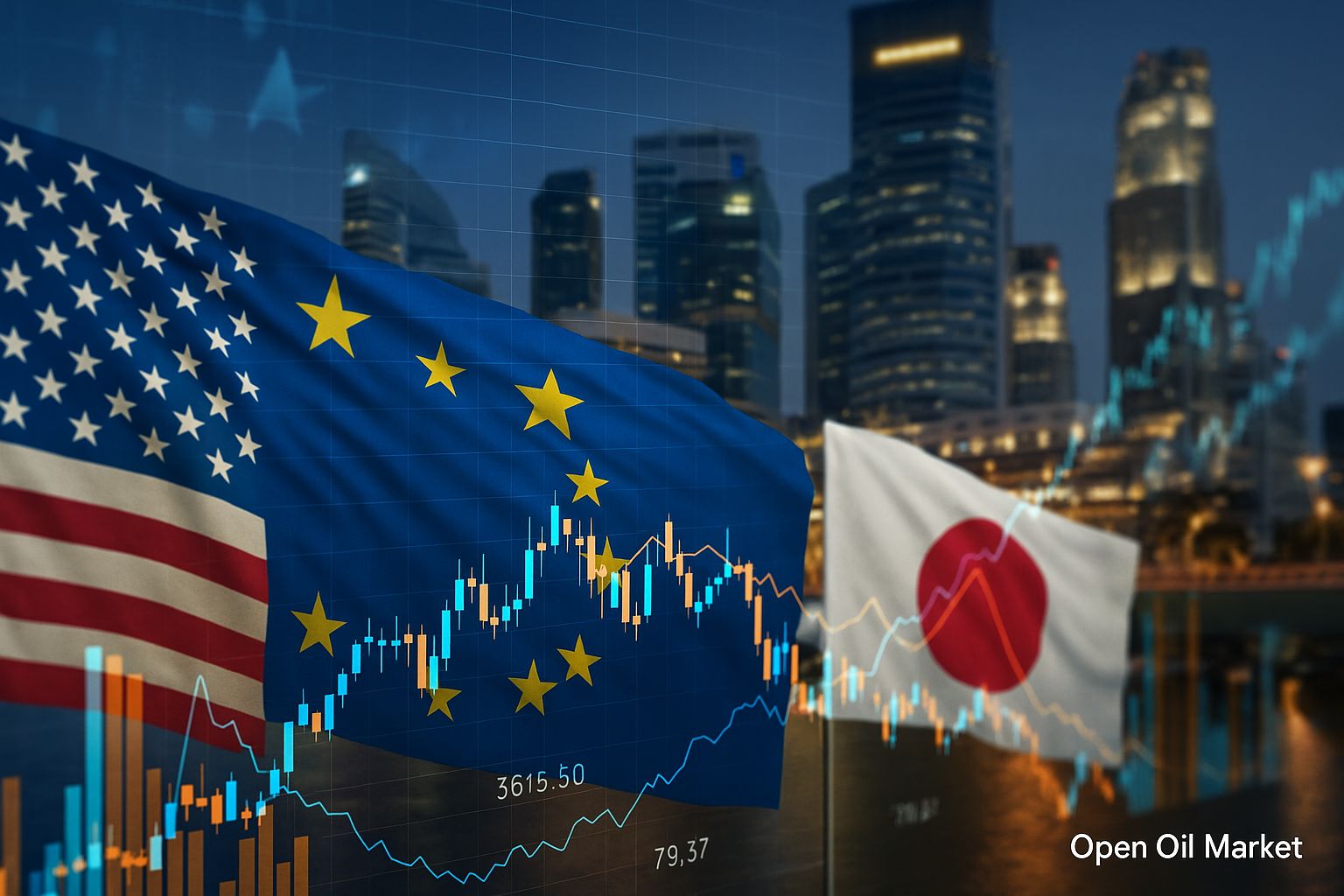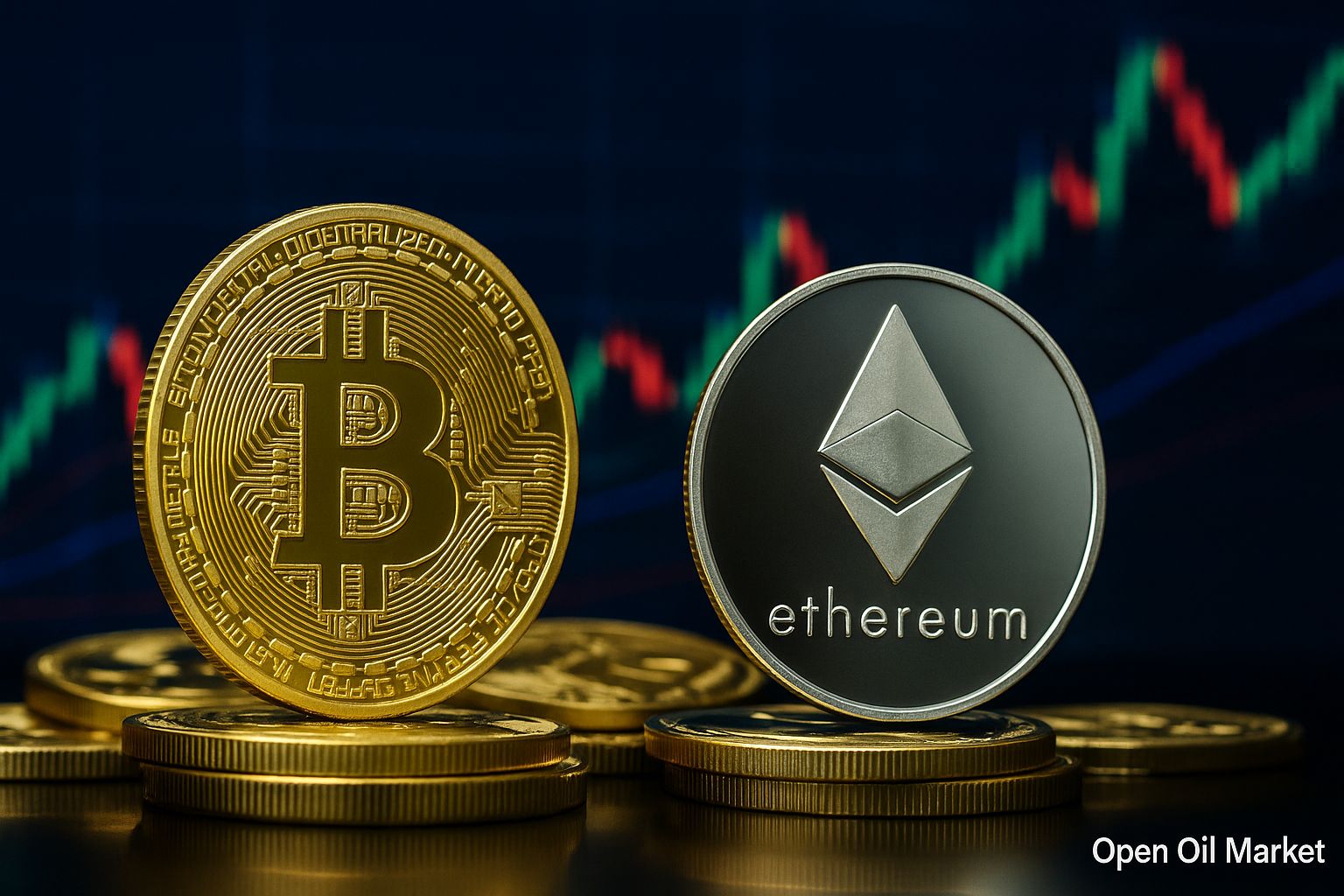
Startup and Venture Capital News — Tuesday, August 5, 2025: IPO Wave, Mega Deals, and the Global Venture Capital Race
By early August 2025, the global venture capital market is showing a confident rise after several years of decline. Investors around the world are once again actively investing in technology companies: deals are being made to attract record amounts of capital, and startup plans for IPOs are back in the spotlight. Major funds and corporations are resuming large-scale venture investments, launching new funds and initiatives; governments in various countries are increasing their support for innovation, striving not to fall behind in the global technology race. According to preliminary data, the first half of 2025 has become the most successful period for venture financing since 2021. In North America alone, investment volume during this period increased by approximately 87% (to ~$116 billion) compared to the same period last year, largely due to mega deals in the artificial intelligence sector. Overall, this positive dynamic indicates the return of private capital to the startup market and the beginning of a new cycle of venture growth.
Venture deals are currently spanning all regions — from Silicon Valley and Europe to Asia, the Middle East, Africa, and Latin America. The highest activity is observed in the USA (which accounts for a lion's share of global investments, a significant portion of which is in the AI sector) and the Middle East (where investment in startups reached ~$2.1 billion in the first half of 2025, a 134% increase compared to the previous year). In Europe, there is a notable reshaping of the landscape: Germany has surpassed the UK in venture investment for the first time in a decade, indicating a strengthening of the continental startup ecosystems. The situation in Asia is heterogeneous: funding for startups in China remains at a reduced level, while India, Southeast Asia, and Gulf countries are attracting more capital. Even local markets (for instance, CIS countries) are trying to catch a new wave of growth despite external constraints. The overall picture indicates a global revival of the venture boom, although investors remain selective and cautious regarding deals.
Below are key events and trends shaping the current agenda of the venture market as of August 5, 2025:
- Ongoing revitalization of the IPO market. Successful public offerings of technology "unicorns" and new applications confirm that the long-awaited "window" for exits remains open.
- Mega funding rounds and new "unicorns." Unprecedented levels of investment are raising startup valuations to record levels, particularly in the field of artificial intelligence.
- Return of large investors and mega funds. Leading players are forming record venture funds and increasing their investments, once again filling the market with capital and enhancing risk appetite.
- Industry diversification of investments. Venture capital is directed not only into AI but also into fintech, climate projects, biotechnology, defense developments, and even crypto startups, expanding market horizons.
- Consolidation and M&A deals. A wave of major mergers, acquisitions, and strategic investments is changing the industry landscape, opening new opportunities for exits and scaling companies.
- Global expansion of venture capital. The investment boom is covering new markets — from Gulf countries and South Asia to Africa and Latin America — forming their own technological ecosystems.
- Local focus (Russia and CIS). Despite constraints, new funds and initiatives are emerging for the development of local startup ecosystems, drawing investor attention to the region.
IPO Wave Gaining Momentum: The "Window" for Going Public Remains Open
The global market for initial public offerings (IPOs) is confidently reviving after a prolonged lull and continues to gain momentum. In Asia, a new wave of IPOs has been initiated by Hong Kong: in recent weeks, several large technology companies have successfully gone public, collectively raising multi-billion dollar sums. For example, Chinese battery manufacturer CATL attracted around $5.2 billion, while pharmaceutical giant Hengrui and food holding Haitian each raised approximately $1.3 billion. These high-profile debuts have shown that investors in the region are once again ready to actively invest in public offerings. Other heavyweight players, such as chip developer Montage Technology, are in line for listing in Hong Kong, planning to raise up to $1 billion, emphasizing the revival of IPO activity at least on Asian platforms.
In the USA and Europe, the situation is also significantly improving. American fintech "unicorn" Chime recently made a successful debut on the stock market, soaring more than 30% on its first day of trading, making it one of the largest fintech IPOs of the year. This success is inspiring other contenders. The design platform Figma recently conducted its long-awaited listing: the IPO raised around $1.5 billion (with the company's revenue for 2024 totaling $749 million) at a valuation of approximately $15–20 billion. Figma's shares began trading with a confident rise, confirming strong investor demand for technology offerings. Numerous well-known startups (including payment service Stripe, social platform Reddit, and Indian e-commerce project Meesho) have already submitted applications or are actively preparing for an IPO in the second half of 2025. This signals that the "window" for IPOs remains open much longer than many had anticipated, and that the market is ready to absorb new listings.
Notably, even the cryptocurrency sector is trying to capitalize on the IPO market's recovery. Cryptocurrency exchange Bullish (one of whose investors is Peter Thiel) has submitted an IPO application in the USA, planning to list under the ticker BLSH with an estimated valuation of around $4 billion. This case shows that the revival of initial offerings covers a broad range of companies — from fintech to crypto startups. The continuation of an active IPO wave is vital for the entire venture ecosystem: successful exits to the public market finally provide funds with opportunities for profitable exits and capital redistribution into new projects. Despite still selective investor sentiment, the long-standing open "window" encourages more startups to consider going public and prepare for listings.
Mega Rounds and New "Unicorns": Investments Hit Record Heights
The artificial intelligence sector remains the main driver of the venture boom in 2025, setting new records for funding amounts. Investors worldwide are eager to invest in AI leaders, directing colossal sums into the most promising projects. Literally every week, new mega rounds are announced, confirming AI's status as the primary "magnet" for venture capital. For instance, the startup Thinking Machines Lab (founded by former OpenAI director Mira Murati) raised about $2 billion at an early stage with a valuation of around $12 billion — an unprecedented market appetite for such a young project. Elon Musk's project xAI announced the closure of a record funding round: approximately $5 billion was secured in equity and another $5 billion in debt, providing the startup with immense resources for developing its AI platform and data center infrastructure. According to insiders, xAI's valuation now exceeds $100 billion, positioning the company among the most valuable private firms in the world.
Another ambitious player, the startup Safe Superintelligence (co-founded by Ilya Sutskever), raised around $2 billion with a valuation over $30 billion for developing "safe" AI systems. Furthermore, industry reports indicate that Anthropic is in the final stages of negotiations for a new round worth $3–5 billion, which could elevate its valuation to astronomical levels of $150–170 billion. Additionally, industry leader OpenAI raised approximately $8.3 billion in investments at a valuation around $300 billion — significantly earlier than initially anticipated. This gigantic round (a part of a plan to raise $40 billion by the end of 2025) was heavily oversubscribed, resulting in early investors facing dilution of their stakes as the company prioritized new strategic partners. Funding included contributions from both long-time partners and new major players. In particular, the Dragoneer fund invested $2.8 billion (one of the largest amounts ever invested by a single venture capital fund), alongside giants Blackstone and TPG. Such unprecedented capital attraction underscores the colossal market interest in leading AI companies.
It is noteworthy that the ongoing investment frenzy encompasses not only the AI projects themselves but also the infrastructure supporting them. Thus, American startup Vast Data, specializing in data storage for large-scale AI systems, is negotiating to raise a new multi-billion dollar round with a valuation of up to $30 billion. According to insiders, both Alphabet's venture arm (CapitalG) and Nvidia itself plan to invest in this round, positioning Vast Data among the most valuable AI startups globally. Overall, such mega deals are creating a new wave of "unicorns" and even "decacorns" (private companies valued over $10 billion), especially in the AI field. Analysts estimate that in the second quarter of 2025, up to 45% of total global venture funding was directed into AI projects. This high concentration of capital in one sector promotes record growth in valuations, while simultaneously compelling market participants to pay closer attention to risk assessment.
The Return of Mega Funds: Large Investors Thrive Once More
The largest investment players are making a triumphant return to the venture scene, signaling a renewed appetite for risk. Japanese conglomerate SoftBank has announced the formation of Vision Fund III, sized at approximately $40–50 billion, focusing on advanced technologies (with an emphasis on AI and robotics). Sovereign funds from Gulf countries have also become noticeably more active, pouring billions of dollars into technological projects and launching state mega-programs to develop the startup sector, thereby establishing their own tech hubs in the Middle East. Simultaneously, dozens of new venture funds — both independent and corporate — are being established worldwide, attracting significant institutional capital to invest in high-tech industries.
Notably, renowned Silicon Valley firms are also increasing their presence. For example, venture giant Andreessen Horowitz (a16z) is raising a record new fund of around $20 billion, primarily aimed at investing in late-stage American AI startups. According to industry research, funds in the USA currently have unprecedented reserves of uninvested capital — over $300 billion, ready to be deployed as confidence returns to the market. This substantial influx of "big money" is filling the ecosystem with liquidity, offering fuel for new rounds and supporting the growth of promising companies' valuations. The return of mega funds and large institutional investors not only intensifies competition for the best deals but also instills confidence in the industry regarding the continued influx of capital.
Diversification of Investments: Fintech, Climate, Biotech (and Even Crypto) on the Rise
In 2025, venture investments are being allocated across an increasingly broad array of sectors, moving beyond just artificial intelligence. After last year's downturn, a notable revival is observed in fintech: large rounds are occurring not only in the USA but also in Europe, Asia, and emerging markets. A significant return of substantial deals in financial technologies is evident — for instance, New York-based platform iCapital recently raised $820 million from a consortium of investors at a valuation exceeding $7.5 billion, signaling renewed interest in the sector.
Simultaneously, a boom in "green" technologies is underway: funds are eagerly financing climate projects — from renewable energy and electric transportation to innovative nuclear developments. For example, Swiss startup Climeworks secured $162 million for expanding its direct CO2 capture systems from the atmosphere (bringing the total raised to over $1 billion). In the field of nuclear fusion, European companies have set a new funding record (around €290 million in the first half of 2025), while American projects lead in mega rounds (for instance, Commonwealth Fusion Systems raised around $1 billion).
Biotechnology and medtech startups are also accumulating significant capital from venture funds. For example, American startup Centivax secured $45 million for developing a universal flu vaccine. The cybersecurity segment remains one of the market's drivers (notably, recalling недавно multi-billion deals in this area mentioned earlier). Crypto and Web3 projects are beginning to revive after a profound decline — in Q2 2025, venture investments in blockchain startups surpassed $10 billion (a maximum since 2022), indicating a gradual return of interest in this area as well. Thus, the venture market is demonstrating increased maturity: capital is now distributed across the broadest spectrum of sectors — from finance and energy to agrotech and defense. Investors are diversifying their portfolios, making the innovative ecosystem more resilient to overheating in specific industries.
Consolidation and M&A Deals: Scaling Up Players
High valuations of companies and fierce market competition are pushing the startup ecosystem towards consolidation. Major mergers and acquisitions are coming to the forefront once again, reshaping power dynamics in the industry. In Southeast Asia, a potential mega deal is under discussion: the market leader in taxi and delivery services, Grab, has resumed talks of merging with Indonesian technology holding GoTo. The merger of the two companies with a total capitalization of around $25 billion would create a dominant platform in the region. The mere fact of resuming dialogue between Grab and GoTo reflects players' desire to optimize costs and strengthen their positions through collaboration.
In the USA and Europe, tech giants are also active in acquiring promising projects. Google recently completed a record acquisition of cloud cybersecurity startup Wiz for $32 billion — the largest tech deal of the year, significantly strengthening Google's position in the cloud services market. Concurrently, Meta has reached an agreement to invest ~ $14 billion in the data annotation platform Scale AI, acquiring about 49% of the shares at a valuation of ~$28 billion. This strategic deal emphasizes the efforts of major IT players to acquire key AI capabilities. Additionally, fueled by demand for AI infrastructure, American cloud provider CoreWeave announced the purchase of mining company Core Scientific for $9 billion to retrofit its data center network (initially built for cryptocurrency mining) for AI needs.
Interest in defense and aerospace technologies is also leading to major deals. In Europe, there has been unprecedented sector growth: German startup Helsing raised approximately €600 million in an investment round led by the Prima Materia fund (the investment company co-founded by Spotify's Daniel Ek), raising Helsing's valuation to roughly €12 billion. As a result, Helsing has become one of the top five most highly valued young companies in the defense sector, affirming the trend toward the activation of private military-tech ventures. Notably, consolidation efforts continue in the cybersecurity market: insiders report that American company Palo Alto Networks intends to acquire Israeli firm CyberArk for approximately $25 billion, aiming to bolster its position in the era of AI threats. Such mega deals demonstrate how even established industry leaders are ready to invest tens of billions of dollars to avoid falling behind in the technology race.
Overall, current activity in the M&A sector and large venture deals reflects the restructuring and maturation of the industry. Mature startups are either merging with each other or becoming targets for acquisition by corporations, while venture funds finally gain the long-awaited opportunities for profitable exits from their investments.
Global Expansion of Venture Capital: New Markets and Regions
The venture boom of 2025 is acquiring truly global proportions, covering markets that were recently on the periphery of the technology scene. Middle Eastern countries are demonstrating record activity: supported by state programs, large funds and hubs for startup development are being created there, and more regional projects are receiving funding. Gulf countries are launching mega-projects to diversify economies through technology, while local venture funds are becoming leading investors both in domestic markets and abroad.
Southeast Asia is seeing new "unicorns" emerge: technological companies in e-commerce, fintech, and logistics are achieving valuations exceeding $1 billion amid the robust growth of the digital economy and expanding audiences. India and Indonesia are also experiencing a surge in venture activity: in recent weeks, several Indian and Indonesian startups have raised funding rounds in the tens and hundreds of millions of dollars, and several of the most successful companies have announced plans for IPOs. This geographical expansion of venture capital intensifies competition for the best projects: today, funds and business angels are tracking promising teams from Singapore and Dubai to Nairobi and São Paulo.
Africa is also witnessing an unprecedented influx of investments, leading to rapid development of local startup ecosystems. From Nigerian fintech projects to Kenyan agrotech startups — an increasing number of African teams are attracting international capital for scaling. Latin America is keeping pace: in 2025, Mexico has overtaken Brazil in terms of venture investments for the first time, while startups in the region are actively raising funds in sectors such as fintech, e-commerce, and delivery. The emergence of new innovation centers in Mexico City, São Paulo, Dubai, Jakarta, and several other cities enhances global competition for capital and talent. Venture investors are now on the lookout for "diamonds" across the globe, broadening the geographical search for promising teams.
Russia and CIS: A Local Focus Amid Global Trends
Despite external constraints, active steps are being taken in Russia and neighboring countries to develop their own startup ecosystems in line with global trends. At the St. Petersburg International Economic Forum (SPIEF-2025), a new venture fund from PSB Bank was announced in partnership with others — targeting around 12 billion rubles, funds are planned to support dual-use projects (drones, AI, robotics, and other advanced areas). In addition to state institutions, private players are becoming active: for example, the venture firm Kama Flow has launched a new fund of 10 billion rubles for investments in mature startups. Even under sanctions, the market is seeking opportunities to finance priority technologies and aims to cultivate its own successful "unicorns."
Concurrently, some regional startups are reaching new heights. For instance, the Krasnodar foodtech project Qummy has raised 440 million rubles at a valuation of ~2.4 billion rubles, preparing for an IPO — this case demonstrates the seriousness of even local initiatives. Furthermore, a state fund called Qazaqstan Venture Group has been established in Kazakhstan with a size of $1 billion to support AI startups. In July 2025, Russia also eased regulations for foreign investors: they were once again allowed to acquire stakes in domestic companies and freely withdraw invested funds. These measures aim to revitalize international investments and integrate the local venture market more closely into global processes.
Although the scale of the venture market in the region remains relatively modest, the foundation for future growth is being gradually laid. Investors are shifting their attention to more mature projects with well-thought-out business models, while the state is expanding support through the development of IT education, accelerators, and special tax regimes. Local startups are striving to position themselves in global value chains, leveraging their strengths in advanced tech areas (AI, Big Data, etc.). Thus, the Russo-neighboring ecosystem is striving not to fall behind global venture trends and is laying the groundwork for a leap as soon as external conditions improve.
Conclusion: Cautious Optimism and Quality Growth
As of early August 2025, sentiments in the venture industry remain cautiously optimistic. Successful IPOs and large funding rounds suggest that the bottom of the downturn has been passed; however, investors continue to carefully select projects, favoring startups with sustainable business models and clear paths to profitability. A significant influx of capital into the AI, fintech, and cybersecurity sectors instills confidence in further industry developments, but venture funds are paying increased attention to diversification and risk management.
If the current momentum is maintained, the second half of 2025 could see further growth in the number of deals and new unicorns. Nevertheless, the main focus will be on the quality of this growth: market participants will concentrate on creating long-term sustainability for startups and healthy returns on investments, to ensure that the current upturn does not lead to another overheating. Thus, the venture market is entering a new phase of development with measured optimism, betting on a balanced approach and sustainable innovation growth.




